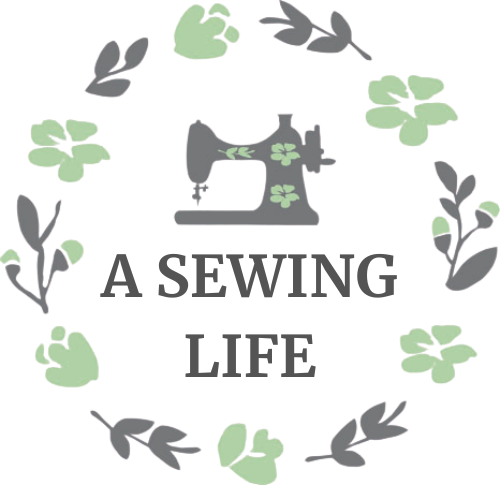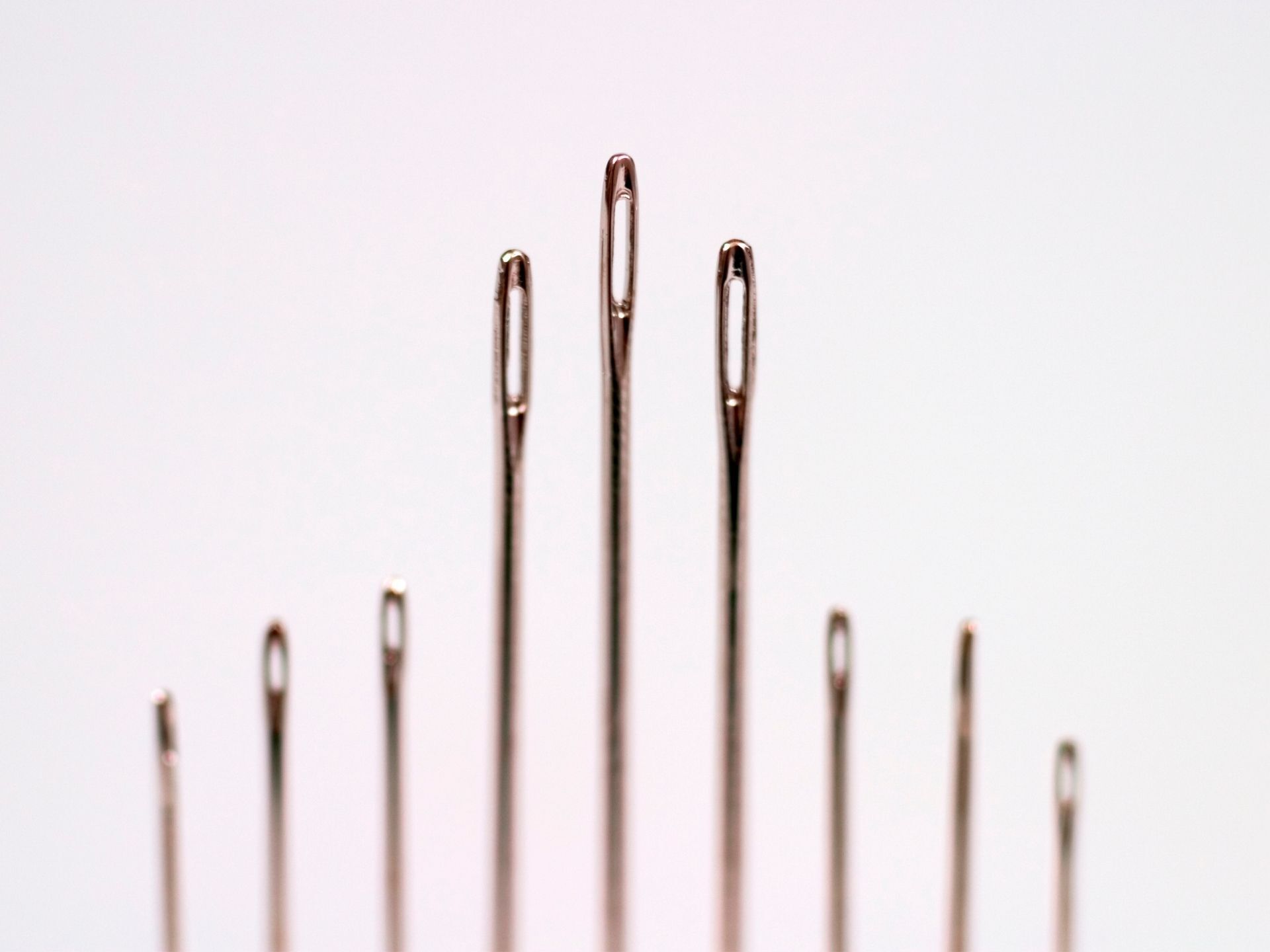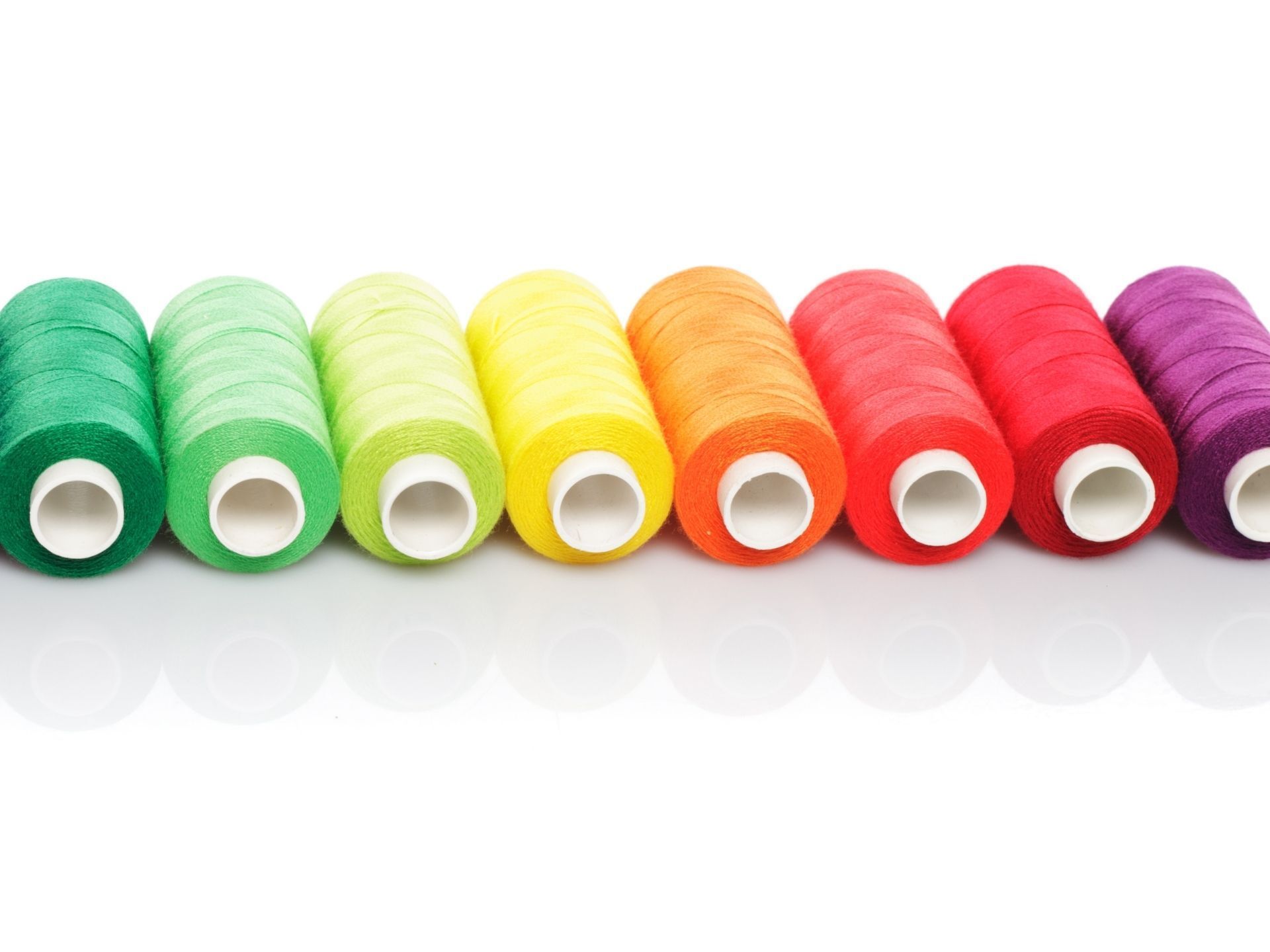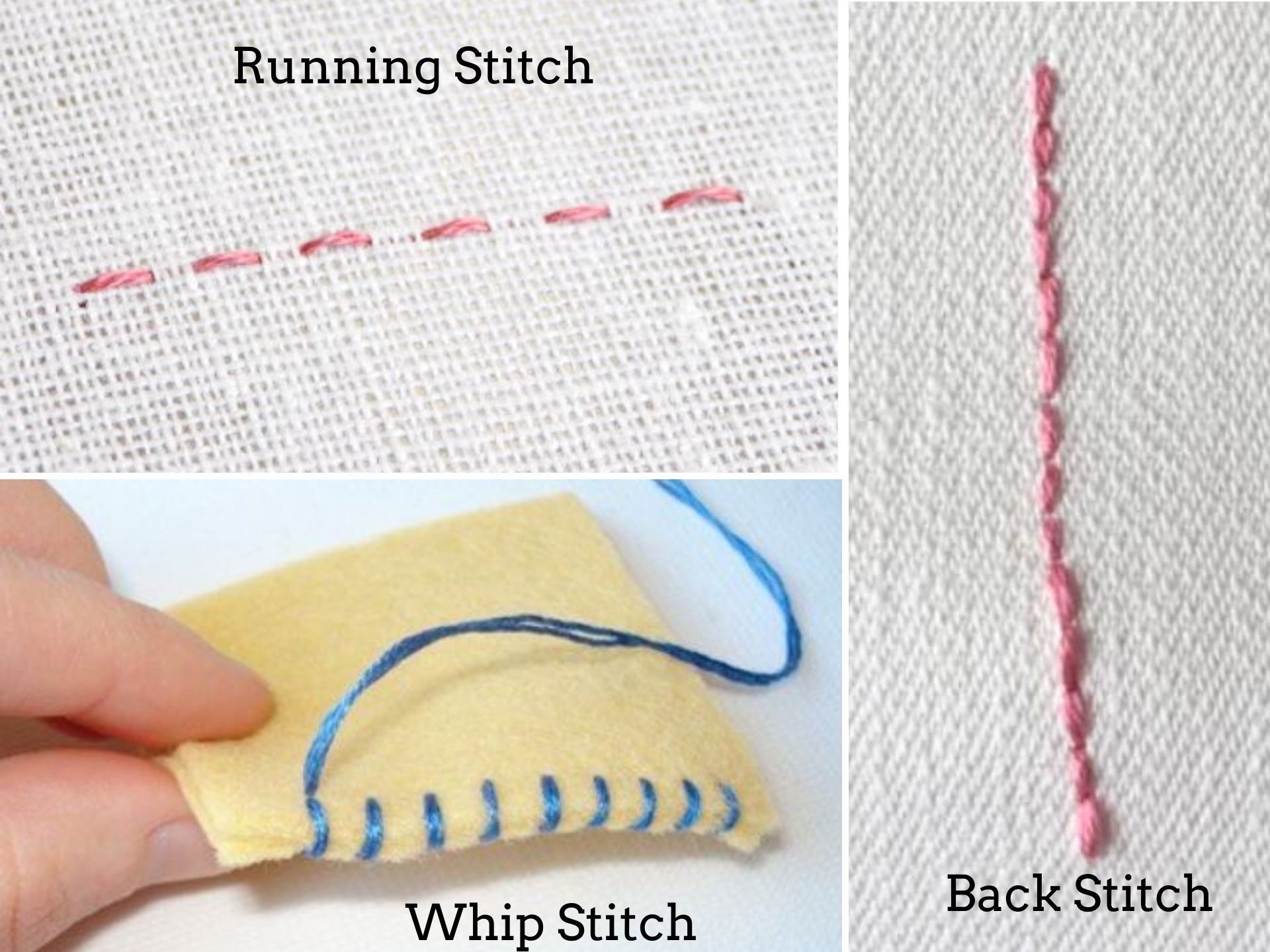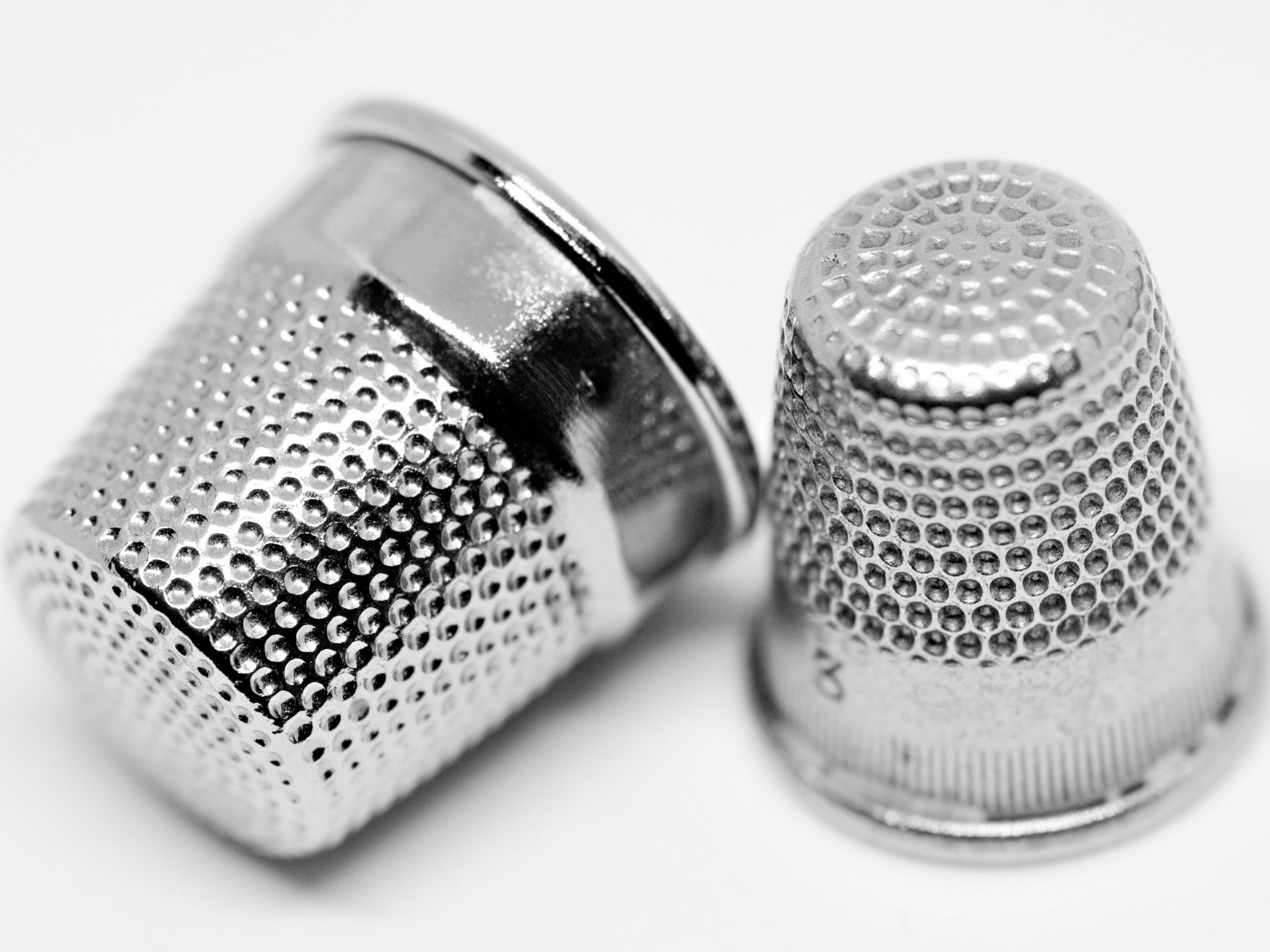10 Top Tips for Hand Sewing
Hand sewing is an art form that is very easy to learn. It is perfect for beginners for several reasons; it's very cheap to start; there is no need to buy a sewing machine which can sometimes be a bit pricey, the equipment is very easy to come by, it can be bought in any craft store or haberdashery which makes this a really accessible hobby.
There are some basics which will help make your hand sewing projects more successful.
1.Use a Sharp, Good Quality Needle
Don't be tempted to buy the really cheap needles because they are generally poor quality and can be blunt. A blunt needle will not go through your fabric and will make it almost impossible to sew. It is a good idea to buy the most expensive needles that you can afford because they will sew better and last longer. I still have needles that I have been using for 20 years and hopefully they will still be going strong in another 20 years time.
2. Use A Good Sewing Thread
This might sound obvious but using the correct thread is really important. Thread is not that expensive to buy and if you use a cheap thread it could ruin the project that you've spent hours creating. I tend to use Gutermann All Purpose Thread for all of my sewing projects. I have used it for many years and I have never had any problems with it. Of course, it is not the only kind of sewing thread that is good, there are many others on the market.
How do you Know if the Thread is Good Enough to Use?
Generally, a good rule of thumb is that if you pull a piece of thread and it snaps, it is not a good enough quality to use for sewing. You don't want it to snap whilst you're using it or even after you've finished the item meaning that it would need to be re-sewn. Don't throw the thread away though, it can be used as tacking cotton for those times when you need to tack seams in place before they are sewn.
There are only 3 stitches that you need to know to be able to hand sew virtually any project and once you've mastered them, you're good to go. The stitches that you need to know are running stitch, back stitch and whip stitch.
3. Running Stitch
The most basic stitch is called running stitch. It is essentially a single row of continuous stitches. If you'd like to watch a video tutorial,
click here.
4. Back Stitch
This stitch involves using running stitch but after every stitch you go back and fill in the gap that has been created. Back stitch is more stable and secure than running stitch. It takes slightly longer to sew than running stitch. If you would like to watch a video tutorial, click here.
5. Whip Stitch
Whip stitch is the stitch that goes in and out of the edge of 2 fabrics, effectively creating a circle around the edges and sewing them together. This stitch is also used in knitting and crocheting as well as sewing. If you'd like to watch a video tutorial, click here.
6. Use a Thimble
I have to be honest and say that I do not use a thimble. However, there are several advantages of using one and lots of people find that once they have got used to wearing one, they never go back.
The advantages are that it stops your finger getting sore from constantly pushing the needle through the fabric. This is particularly useful if you have sensitive fingers or if you are working on fabric which is particularly difficult to pass your needle through.
A word of warning, if you find that it is becoming difficult to get your needle through your fabric, check that the needle is sharp. A blunt needle will give you that problem and you simply need to get a sharp needle.
7. Use Hand Sewing to Maintain Good Mental Health
Hand sewing is very relaxing and has lots of benefits for your mental health and well-being. If you'd like to read more about the benefits, click here. Hand sewing can be quite meditative. The repetitive nature of the stitches allows you to be fully focused on the moment. Hand sewing involves concentration and being purposeful about the task in hand.
8. Relax and Enjoy it
One of the best tips for hand sewing is to relax into the project and enjoy it. Don't take it too seriously and make sure that it's always an enjoyable, fun activity for you. Sewing, in fact most crafts, is as much about the journey and the process, as it is about the destination and the finished product.
9. Slow Down
Unless you're in the Sewing Olympics (which I've just made up and doesn't exist), or you're a contestant in the Great British sewing Bee, then sewing should be enjoyed at a leisurely pace. It is not a sprint to the finish, it's a nice leisurely stroll.
10. Imperfections add Character
If you follow a pattern and your project does not look exactly like the picture, that's great. It doesn't need to. Each of your projects has a little bit of you added into it and because you are unique, so will your project be.
Any imperfections simply add character and show that your project has been hand made with love. There is something very special about making something by hand because you have given your time to it. There is also something very liberating about knowing that your project doesn't have to be perfect.
Try this Free Hand Sewing Pattern
If you would like to try a hand sewing project, we have a free pattern for a mini bear that would be perfect.
It gives you the opportunity to try an easy project suitable for beginners. Click here to subscribe and receive the free pattern.
